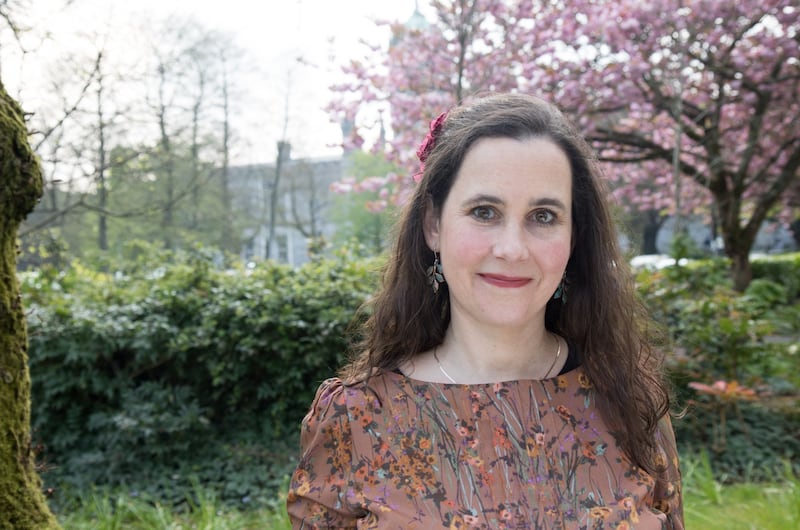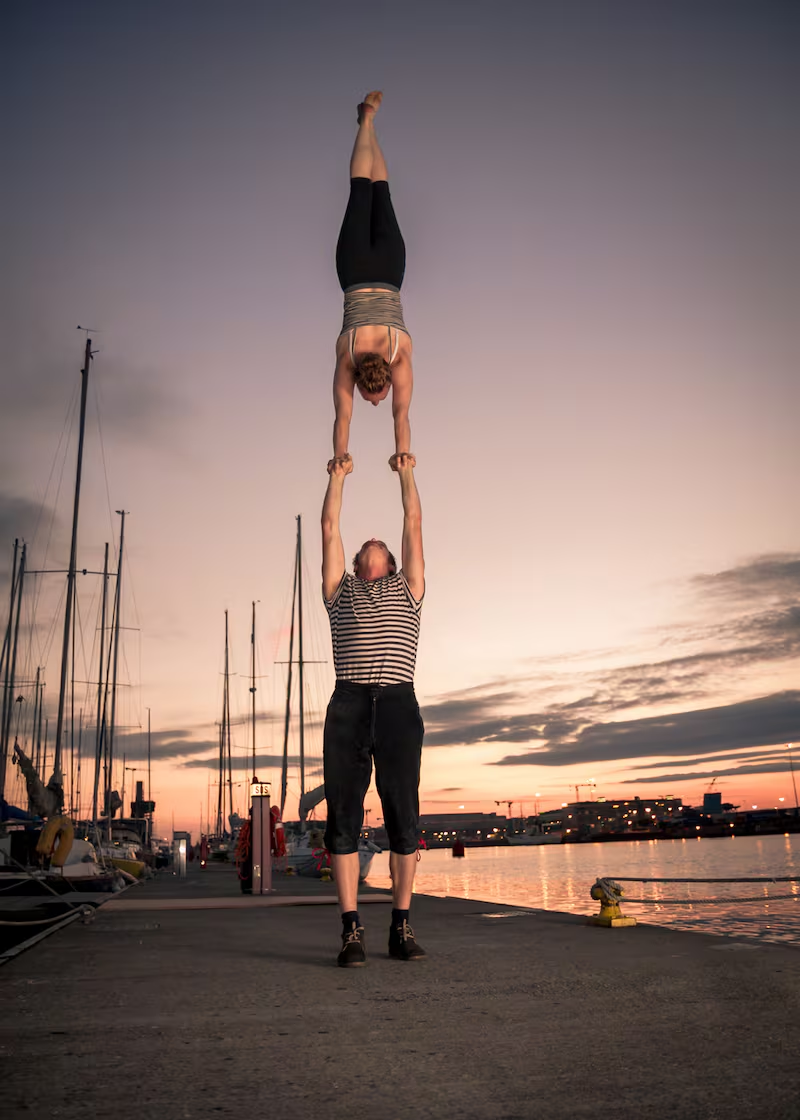They say there’s no such thing as bad weather, just the wrong clothes. Nevertheless, contemplating a winter aiming to enjoy ourselves outdoors can seem a chilling thought. We need to wise up.
Outdoor performance is the future of safe live arts for the foreseeable future. It is also nothing new. It has been going on for thousands of years, and if you think a bit of winter and rough weather stops play, what about all of us who turn up in droves to shiver on the sidelines of winter sports? If it is fine for GAA and rugby, why not the arts? Plus, if we plan now, we may even be ready for the better weather to come.
The first thing to realise is that things have to change. Bending current models out of shape to suit the ongoing crisis simply won’t work. (Question: how long can something endure and still be called a crisis?) Plays in quarter-full theatres, micro-gatherings in major venues, and the economics of massive stages for outdoor festivals are not the future. Just as the visual-arts community has realised that the era of the international blockbuster is over, performance must reinvent too.
While the budget announcement of €50 million to the live performance industry is welcome, it must be used wisely. To subsidise old models would be to squander the opportunity to remake how we experience live performance, and the opportunity to reassess how we judge success.
Picture the Electric Picnic: for every one of the thousands that squash into the main stage area for the headline acts, there are also smaller groups for whom the experience of the second and third stages is equally enriching. It can also be considerably more intimate. So why not enable those experiences to be created as individual events?
These days, numbers do not equate to success. More, presently, is not better. On the subject of that, perhaps the single most damaging thing to the development of outdoor live events was the garbled Government announcement on August 18th that the permissible numbers for outdoor gatherings would be reduced from 200 to 15, even as 50 were still allowed inside at weddings.
Immediately the Abbey’s promenade production of The Great Hunger was in doubt, as was DruidGregory at Coole Park. Those shows did go on but, at the same time, a whole sector, putting their brilliant minds to making safer arts available, went confusedly back to the obstacle-filled drawing board.
Just to be clear: you are not completely safe outdoors. But, with precautions, you are safer than you are inside. The Health Service Executive’s guidance document on building ventilation during Covid-19, published last month, cites how, of 318 outbreaks in China, only one could be traced to an outdoor space. The document also notes a Japanese study that suggests transmission is 20 times more likely indoors.
So why isn't the arts outside being widely promoted and supported? "It's something I have been thinking about a lot, and it's really bothering me," says director of the Irish Street Arts, Circus and Spectacle Network, Lucy Medlycott. "The potential of public space as a space for artistic creation is under revolution. Where art happens, who it is for, what it leaves behind, has never been more relevant than now."
It’s not just about keeping art, artists and audiences alive, but also about how to maintain our public mental-health needs.

“This is where our outdoor arts community may have the answer. Outdoor arts reimagines the audience, the place and the possibilities of art. It is diverse, it is challenging, it is all-encompassing, it is a crossroad of genres. Everyone’s talking about removing barriers, changing the way people think about things, access, diversity – street arts does all that.”
So how do we do it safely and, just as importantly, how do we access permission to do it? The question, as it always should have been, is not one of adding ever greater layers of restrictions, but of working out how to ensure adherence to the ones in place, while also opening up a conversation about things we actually can do. The more it becomes a single matter of “can’t”, the more some people will kick back, at the same time as the mental health of those others is increasingly negatively effected.
So with major events off the agenda, the stage (so to speak) is set for smaller performances and productions in new settings, and Ireland is awash with them. Imagine a cello recital in a handball alley; a play in the round at a local GAA pitch. Ireland’s arts festivals have been at it for years, with Kilkenny a particular pioneer. Carlow Arts Festival’s tented performance of Sleep Symphony last year could have been a model for Covid-safe performance, but it is doubtful if you would get permission to hold it today.
Look to Cork’s Corcadorca for a legacy of innovative outdoor productions. And on the subject of handball alleys, with which Ireland abounds, Timmy Creed’s Spliced debuted in one for the Dublin Fringe in 2017. More recently, Fibín’s Irish language drive-in drama innovated in Connemara last August. In terms of available infrastructure, we also have amphitheatres, sports grounds, OPW sites, parade grounds, bandstands in public parks, town squares and parks, castle courtyards, old railway stations, greens on housing estates and flats complexes, and more. Ireland is rich with impromptu outdoor venues.
Go up a layer in ambition and imagination and imagine a stage on a lake, or audiences socially distanced at tables for six, under individual gazebo-canopies, watching outdoor productions, cabaret- style. Picture contemporary retakes of the medieval passion plays, in procession or on a series of outdoor stages. Artists and theatre companies will have the ideas, but the problem is one of shared knowledge.
The Arts Council is currently evaluating tenders to identify "a small number of performance spaces nationally" and to work with local authorities to "explore the possibilities of expanded and innovative performance spaces . . ."
Nevertheless, while various reports have already been conducted via the Arts Council and the local authorities into spaces that have been used for arts events, there seems no obvious central database on what is available in terms of wider potential spaces across the country. There is also no resource for feedback into a knowledge bank for the future. Additionally, there is no central authority on how to go about getting permission to stage an event, no resource for advice on how to do it safely and no streamlining of requirements from county to county.
Proceeding safely Event safety advise
r Andrew Ewings sees the hiatus in performance caused by Covid-19 as an opportunity to get things right. He has worked on events from the St Patrick's Festival to the Ryder Cup, the gigs at Slane Castle to Robbie Williams in Phoenix Park, and is a specialist adviser to the Event Industry Association of Ireland.
“It’s the ideal opportunity to set standards, and to look across the board, to see how in a post-Covid era we could improve consistency and make events safe, not just for Covid but for the future.”
Ewings describes the disjointed nature of putting on events and gigs in Ireland, how each local authority has a different approach and a different set of requirements. “So many parties need to be involved,” he says, citing gardaí, fire officers, town engineers, county mangers and more. But there is no template for doing this, and no coherent national approach.
“Even the licensed events for over 5,000 people are using a document that dates back to 1996,” he continues. The problem with that Safety at Outdoor Pop Concerts and Other Outdoor Musical Events document, published by the Department of Tourism, Culture, Arts, Gaeltacht, Sport and Media, is that it includes enough anachronisms – references to the health boards, for example – and grey areas, to ensure there is little appetite among the major promoters to update it.
While Ewings welcomes the additional €100 million being pumped into the arts (which includes the €50 million in additional funding to the Arts Council), he is concerned that political pressures could lead to it being absorbed by the major players and promoters, creating a monopoly to replace what has been a thriving ecosystem. The answer, he says, is to “generate small events in public places”.
“And, for that you need to create a support mechanism. The only way that can be done is through a Government department, and we need one department to take ownership of that, with buy-in across the ministries,” he says.
These would necessarily include the areas of health, justice (the gardaí are involved), arts, planning and heritage, and that would call for a great deal of political will to implement.
Dublin City Council has an events handbook, and England has the Purple Guide, published by the UK health and safety executive, although Ewings, who has worked in both jurisdictions, believes that with a little forethought we could do better. "We need a safety advisory group, with multilevel, multi-experience, and it needs to be independent."
Such a group, he says, could act like a helpline for people wanting to put things on. “It should be for everyone to have access to. So I can, for example, email from Laois, and it will help me know where I can go, who should I get hold of and what I should do. It would be like having your own solicitor, but one who is experienced in every aspect of event safety, including Covid.”

Small events, organised both locally and nationally, will not only provide those crucial moments of joy, they can also democratise access, provide performance opportunities, and give employment to Ireland’s amazing brigade of industry professionals. “Unless we get some of the smaller events up and running we will start losing people,” Ewings says.
So here we are, with additional millions, and at least two years until things get back to anywhere near what used to pass for normal. Get it right, and we may well end up creating a better, newer normal – one in which live performance can take place anywhere, for anyone, democratically and safely; from walled gardens to market places, parking lots to roof tops, enriching lives and cultures as we go. Let’s get outside.
The Irish Street Arts Circus and Spectacle Network seminar, Why Don't We Do It in the Road, will explore the potential of outdoor performance with Vida Cerkvenick Bren, author of the book of the same name, on November 10th. isacs.ie/events












